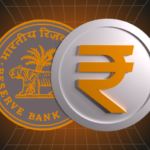Will Digital Rupee Kill Cash? The Future of Physical Currency in India
India is standing at a fascinating crossroads. The Reserve Bank of India (RBI) is rolling out the Digital Rupee — a futuristic Central Bank Digital Currency (CBDC) designed to revolutionize money itself. So naturally, the million-rupee question is: Will this shiny new Digital Rupee kill cash?
Spoiler alert: Not anytime soon. But let’s break down the dynamics of physical cash’s future, how the Digital Rupee fits in, and why both might just coexist for a long time.
The Rise of the Digital Rupee — What Is It Anyway?
The Digital Rupee is digital money issued by the RBI, fully backed by the government. Think of it like your ₹500 note — but existing only in your phone or digital wallet. It’s legal tender, programmable, and designed for instant, secure transactions. Unlike cryptocurrencies such as Bitcoin, it’s centralized, regulated, and stable.
Why People Think Digital Rupee Will Kill Cash
- Convenience Overload: Digital Rupee can be used even without a bank account or internet in some cases, making payments super easy.
- Reduced Transaction Costs: No more fees for UPI or card networks; transactions can be cheaper and faster.
- Government Push: The RBI’s mission includes cracking down on black money and boosting transparency — and digital money is easier to track than cash.
- Future-ready Features: Programmability, offline payments, and cross-border remittances — cash just can’t do all that.
Sounds like a death sentence for cash, right?
Why Cash Isn’t Dead Yet (And Won’t Be Soon)
- Cash = Trust & Privacy: Millions of Indians trust cash for anonymity, simplicity, and control. You don’t need a smartphone or data pack to pay with cash.
- Digital Literacy & Infrastructure: India’s internet access is growing but not universal. Rural and remote areas still depend heavily on physical cash.
- Cultural Habit: Cash is embedded in Indian life — from street vendors to weddings, chaiwalas to big festivals, it’s king.
- Backup for Blackouts: When phones die or networks crash, cash saves the day.
- Financial Inclusion Gap: Many still lack digital payment access or prefer cash due to fear of tech or distrust in digital systems.
What Experts Say: Coexistence, Not Replacement
Financial experts and RBI officials are clear — the Digital Rupee isn’t here to kill cash but to complement it. Here’s how:
- Hybrid Economy: Cash will continue to serve small, everyday transactions where digital isn’t practical.
- Digital Rupee for Programmability & Efficiency: Government subsidies, welfare payments, and large retail transactions will benefit from programmable money.
- Gradual Transition: The shift toward digital payments will be organic and gradual, respecting India’s diversity.
- Multiple Payment Options: UPI, wallets, cards, cash, and Digital Rupee will all coexist — giving people choice and resilience.
Challenges Ahead for the Digital Rupee
- Building Trust: Convincing a billion people to trust and use a new form of money is no joke.
- Cybersecurity Risks: Digital money needs rock-solid security to prevent hacks and fraud.
- Digital Literacy: Massive education campaigns are needed so everyone understands and can use CBDCs confidently.
- Privacy Concerns: Balancing transparency for governments with users’ privacy rights will be critical.
So, Will Digital Rupee Kill Cash?
Nah, at least not by 2030. Physical cash isn’t going anywhere overnight. Instead, expect:
- A gradual decline in cash usage as digital adoption spreads.
- The Digital Rupee gaining ground in urban, semi-urban, and formal sectors.
- Cash still ruling in rural pockets and informal sectors for years.
- An ecosystem where digital and physical money live side-by-side, supporting financial inclusion and innovation.
Final Thoughts: The Future Is Not Cash vs Digital — It’s Both
India’s money future is not a zero-sum game. The Digital Rupee is a giant leap forward, but cash still plays a vital role in millions of lives. Together, they’ll create a more inclusive, flexible, and secure financial system.
For the foreseeable future, your wallet will probably hold both a ₹500 note and a digital token. And that’s the best of both worlds.




